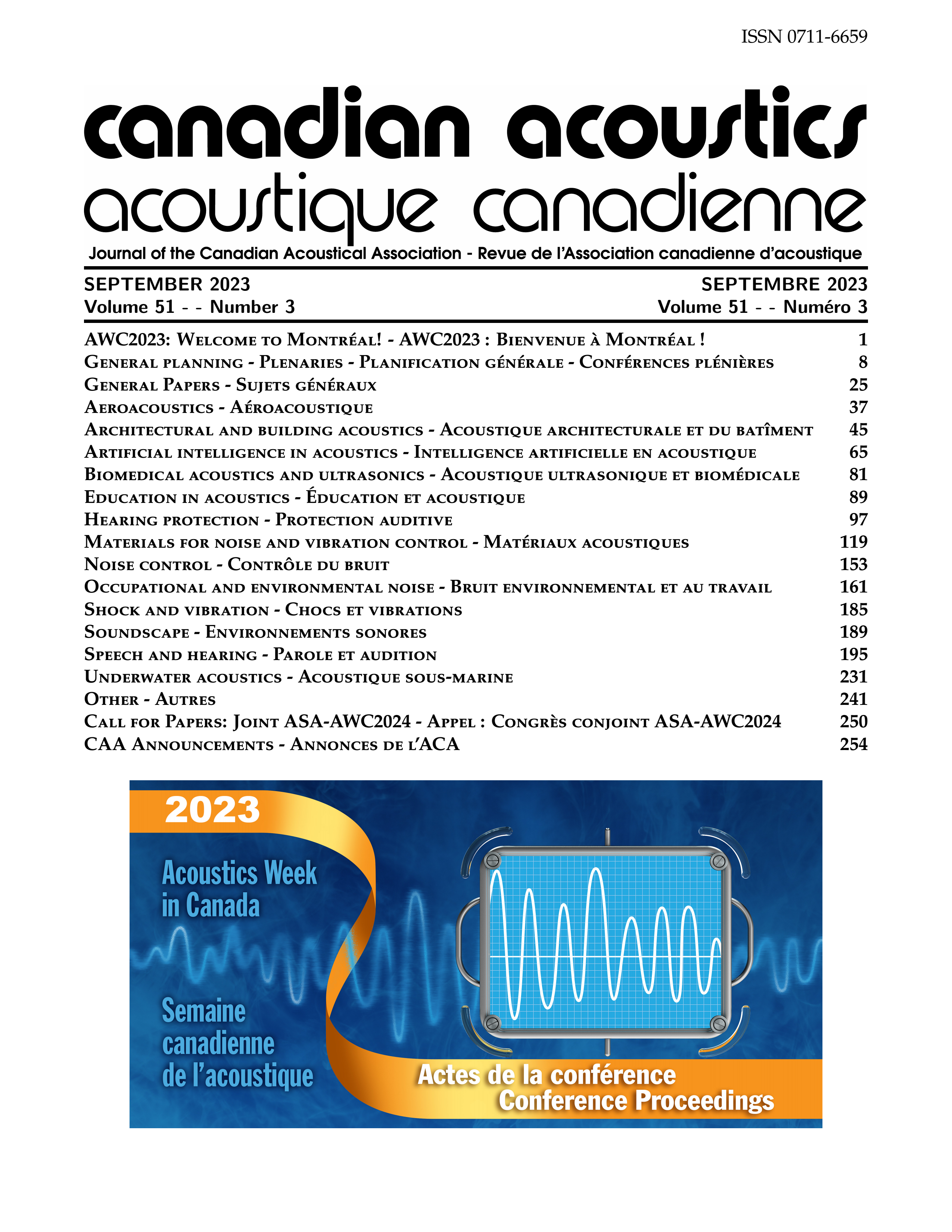Time-Domain Numerical Investigation to Assess Noise Reduction Allowed by a Non-Linear Passive Earplug Facing Impulse Noises.
Abstract
To protect the hearing against high-level impulse noises, non-linear passive earplugs (NLPE) might be employed. Unlike conventional passive protectors, these devices provide an increasing peak amplitude attenuation with the impulse noise level thanks to filters made of one or more small orifices. To evaluate these protectors’ performances, empirical studies were previously conducted using acoustic test fixtures. However, these evaluations required a specific and expensive protocol. Thus, a new approach based on the Finite Element Method (FEM) was used to model a NLPE inserted in the ear canal and facing a 130 dB-peak and a 150 dB-peak impulse wave. The FEM model acoustic pressure in the ear canal corroborates the pressure evaluated experimentally. This approach provides a promising avenue for further optimization of these hearing protectors, while limiting the high cost of experimental evaluations.Additional Files
Published
How to Cite
Issue
Section
License
Author Licensing Addendum
This Licensing Addendum ("Addendum") is entered into between the undersigned Author(s) and Canadian Acoustics journal published by the Canadian Acoustical Association (hereinafter referred to as the "Publisher"). The Author(s) and the Publisher agree as follows:
-
Retained Rights: The Author(s) retain(s) the following rights:
- The right to reproduce, distribute, and publicly display the Work on the Author's personal website or the website of the Author's institution.
- The right to use the Work in the Author's teaching activities and presentations.
- The right to include the Work in a compilation for the Author's personal use, not for sale.
-
Grant of License: The Author(s) grant(s) to the Publisher a worldwide exclusive license to publish, reproduce, distribute, and display the Work in Canadian Acoustics and any other formats and media deemed appropriate by the Publisher.
-
Attribution: The Publisher agrees to include proper attribution to the Author(s) in all publications and reproductions of the Work.
-
No Conflict: This Addendum is intended to be in harmony with, and not in conflict with, the terms and conditions of the original agreement entered into between the Author(s) and the Publisher.
-
Copyright Clause: Copyright on articles is held by the Author(s). The corresponding Author has the right to grant on behalf of all Authors and does grant on behalf of all Authors, a worldwide exclusive license to the Publisher and its licensees in perpetuity, in all forms, formats, and media (whether known now or created in the future), including but not limited to the rights to publish, reproduce, distribute, display, store, translate, create adaptations, reprints, include within collections, and create summaries, extracts, and/or abstracts of the Contribution.


